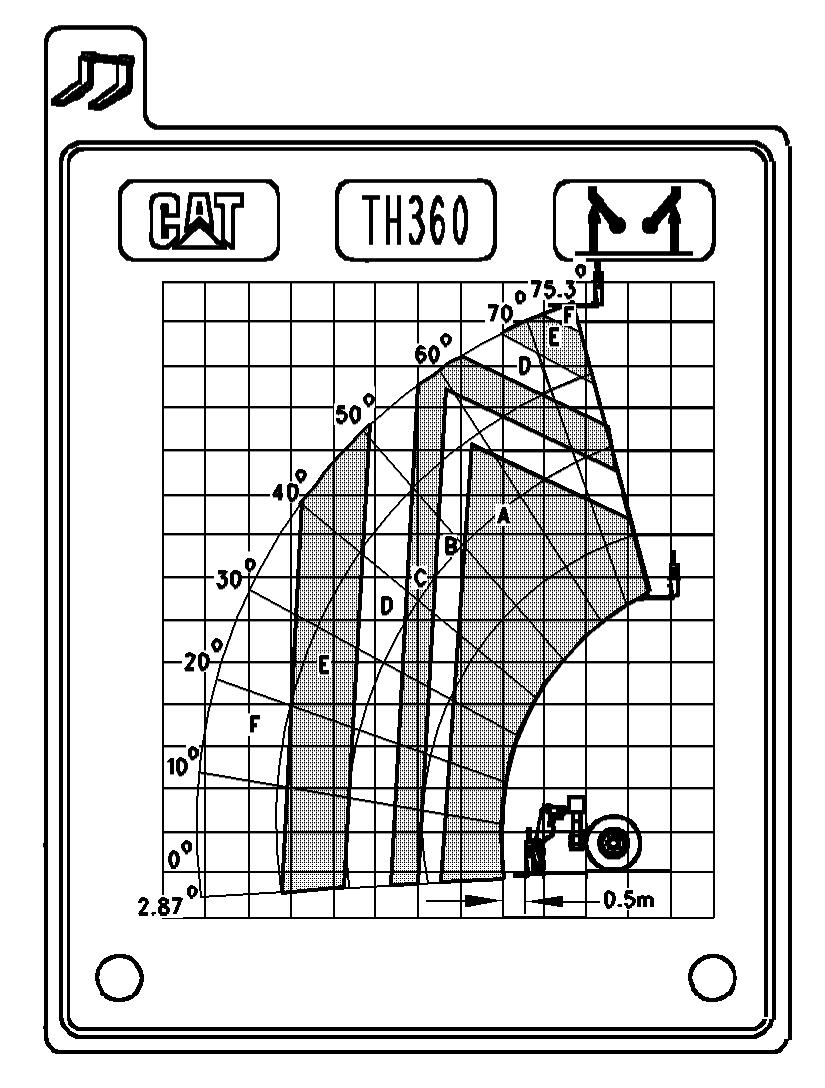
2 minute read
the Load Chart
Examples of Estimating the Lift Operation from the Load Chart
Note: In the examples that follow, the numbers are from the load chart that is shown at the end of this section. This load chart is only for illustrative purposes. This load chart does not relate to any particular machine. The numbers that are quoted have no units. The units on the load charts which are installed in a particular machine may be kilograms or pounds.
Example 1
• The weight of the intended load is 45 units. • The boom angle reference is 56 degrees. • The boom extension reference scale is at "D". With reference to the load chart, "X" is the point of intersection for the values of the boom angle reference and the boom extension reference. This point of intersection is in the load zone for 80 units. The intended load of 45 units is less than the value in the load zone so the load chart indicates that the load is within the capacity of the machine.
Example 2
• The weight of the intended load is 125 units. • The boom angle reference is 40 degrees. • The boom extension reference scale is at "B". With reference to the load chart, "Y" is the point of intersection for the values of the boom angle reference and the boom extension reference. This point of intersection is in the load zone for 125 units. The intended load of 125 units is the same value as the value in the load zone so the load chart indicates that the load is at the maximum capacity of the machine.
Example 3
• The weight of the intended load is 27 units. • The boom angle reference is 22 degrees. • The boom extension reference scale is approximately 66 percent between "D" and full extension. Full extension is "E" on the load chart. With reference to the load chart, "Z" is the point of intersection for the values of the boom angle reference and the boom extension reference. This point of intersection is in the load zone for 20 units. The intended load of 27 units is greater than the value in the load zone so the load chart indicates that the load is beyond the capacity of the machine. The lift operation
must not be attempted.
If the load chart indicates that the lift operation is within the capacity of the machine, attempt to make the operation but proceed with care. Remember that the load may weigh more than the estimate for the load. The load chart is for estimating the lift operation only.
Illustration 28 g00913591 Typical Load Chart










